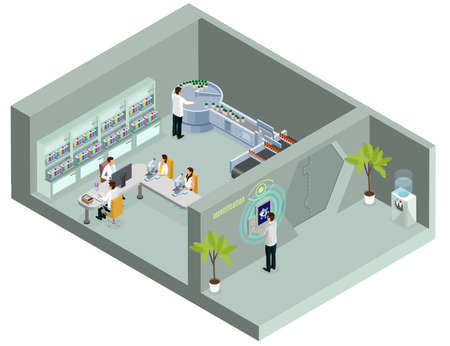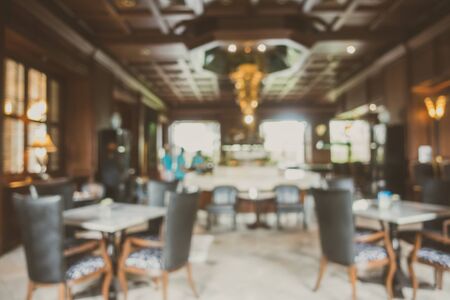Embracing Indian Minimalism
In the ever-evolving landscape of urban India, modern cafes in cities like Bengaluru and Mumbai are redefining their interiors by embracing a distinctly Indian take on minimalism. This design approach is not about stripping away all character, but rather about creating an environment that feels open, functional, and inviting while celebrating local roots. Earthy colour palettes—think terracotta, muted greens, and warm beiges—dominate these spaces, echoing the hues found in traditional Indian homes and landscapes. Furnishings often feature clean lines and simple silhouettes, allowing handcrafted elements such as cane chairs, block-printed cushions, or brass lamps to stand out as subtle nods to heritage.
Uncluttered layouts are key, with clever use of space ensuring that even smaller cafes feel roomy and relaxed. Owners are increasingly choosing locally sourced materials like Kota stone for flooring or reclaimed wood for tables, blending sustainability with style. The overall vibe is calm yet vibrant—a reflection of urban Indias dynamic spirit tempered by a respect for tradition. In this way, modern Indian cafes provide not just a spot for great coffee but also a thoughtfully curated cultural experience for every visitor.
2. Handcrafted Elements & Local Artistry
In the vibrant landscape of modern Indian urban cafe design, the infusion of handcrafted elements and local artistry has become a defining trend. Cafes across India are embracing an authentic Desi vibe by spotlighting the creativity of homegrown artisans. Hand-painted murals, bespoke furniture, and décor items sourced from local designers are not just style statements—they celebrate Indian heritage in contemporary spaces.
Why Handcrafted Elements Matter
Handcrafted décor gives each cafe its own character, setting it apart from generic global chains. Murals often depict cityscapes, folk tales, or motifs inspired by Indian culture, instantly connecting guests to a sense of place. Artisanal tables, chairs, and lighting fixtures made with traditional woodworking or metalcraft techniques add warmth and story to the interiors.
Popular Handcrafted Elements in Urban Indian Cafes
| Element | Description | Cultural Relevance |
|---|---|---|
| Hand-Painted Murals | Walls adorned with vibrant scenes and motifs painted by local artists. | Showcases regional stories and art forms like Warli, Madhubani, or street art. |
| Artisanal Furniture | Bespoke chairs, tables, and benches crafted using indigenous materials. | Supports local craftspeople; integrates cane, teak, or reclaimed wood. |
| Decorative Accents | Lamps, planters, and wall hangings handmade by designers from various states. | Adds a Pan-Indian flavour with eclectic patterns and textures. |
Creating a Uniquely Desi Vibe
The strategic use of handcrafted elements makes every corner Instagram-worthy while fostering a community-centric ethos. By collaborating with local artists and design studios—from Mumbai to Bengaluru—cafes not only offer customers an immersive experience but also help sustain traditional arts in a modern context. This blend of old-world charm with new-age sensibilities is what sets contemporary Indian urban cafes apart on the global stage.

3. Fusion of Tradition & Modernity
One of the most striking trends in modern Indian urban cafe design is the seamless fusion of tradition and modernity, resulting in spaces that truly embody a ‘glocal’ identity. Indian cafes are increasingly embracing contemporary infrastructure elements such as open kitchens, which foster transparency and create interactive dining experiences. Industrial lighting, with exposed bulbs and metal fixtures, is another popular choice, lending a cosmopolitan vibe to interiors while ensuring optimal illumination for both ambience and functionality.
However, what sets Indian urban cafes apart is their unique ability to weave indigenous motifs and craftsmanship into these modern frameworks. Iconic features like jali screens—intricately carved wooden or metal partitions inspired by traditional architecture—are used not only as decorative dividers but also to play with light and shadow across the space. This not only enhances privacy but also provides a subtle nod to India’s rich architectural heritage.
Similarly, walls often come alive with Warli art, a tribal form of mural painting from Maharashtra. These simple yet evocative geometric patterns tell stories of everyday village life, adding warmth, authenticity, and a sense of rootedness to otherwise sleek urban settings. The incorporation of such local artistry ensures that patrons feel an emotional connection to the space, making every visit memorable.
This blend of global design sensibilities with native accents reflects the aspirations of new-age India: forward-looking yet deeply respectful of its cultural roots. Whether it’s brass finishes alongside concrete countertops or vibrant block prints accenting minimalist furniture, each element is thoughtfully chosen to create an inviting atmosphere that resonates with both locals and international visitors.
The result is a dynamic café environment where tradition meets innovation—serving as a testament to India’s evolving urban culture while honouring its timeless legacy.
Eco-Friendly and Sustainable Choices
Today’s modern Indian urban cafés are embracing eco-friendly design as a core value, mirroring the country’s traditional respect for nature and the innovative spirit of jugaad—finding creative solutions with limited resources. Café owners and designers are increasingly choosing upcycled materials, introducing lush indoor greenery, and adopting environmentally conscious construction practices that align with the evolving expectations of India’s urban youth.
Upcycled Materials: The Heart of Jugaad
Resourcefulness is embedded in Indian culture. Many cafés now repurpose old furniture, reclaimed wood, or discarded industrial elements to craft unique interiors that tell a story. This not only minimises waste but also creates an aesthetic that feels both modern and rooted in local values.
| Material | Source | Café Application |
|---|---|---|
| Reclaimed Wood | Old homes/warehouses | Tables, wall panels, flooring |
| Metal Drums & Pipes | Industrial scrap | Lighting fixtures, bar stools |
| Glass Bottles | Beverage waste | Lamps, partition walls |
Indoor Greenery: Bringing Nature Inside
The addition of indoor plants is more than just a trend; it reflects India’s long-held belief in living harmoniously with nature. Hanging gardens, vertical green walls, and planters made from recycled containers help purify the air and infuse the café space with tranquillity. Many cafés even grow their own herbs for use in dishes and drinks, offering freshness while reducing food miles.
Popular Indoor Plants in Indian Cafés:
- Tulsi (Holy Basil) – revered for its spiritual significance and air-purifying qualities
- Money Plant – known for easy maintenance and positive energy
- Aloe Vera – valued for its medicinal properties and resilience
Eco-Conscious Construction Methods
Sustainable design goes beyond décor—café owners opt for energy-efficient lighting (LEDs), solar panels on rooftops, and rainwater harvesting systems. Locally sourced bricks, natural stone, lime plaster, or mud walls reduce environmental impact while giving spaces an earthy, grounded feel reminiscent of traditional Indian architecture.
Sustainability Practices at a Glance:
| Sustainable Practice | Benefit |
|---|---|
| Solar Panels Installation | Reduces electricity costs & carbon footprint |
| Rainwater Harvesting | Conserves water resources; essential in urban India |
| LED Lighting & Sensors | Lowers energy consumption significantly |
| Naturally Ventilated Spaces | Cuts down air conditioning usage; improves comfort |
This mindful approach to sustainable design not only appeals to eco-conscious customers but also honours Indian traditions—blending innovation with respect for Mother Earth. For urban cafés aiming to stand out while supporting environmental stewardship, these choices represent the future of contemporary Indian hospitality.
5. Dynamic Community Spaces
Flexible Layouts for Urban Experiences
One of the most exciting trends in modern Indian urban cafe design is the creation of flexible, multifunctional spaces that serve as cultural hubs. Today’s cafes are no longer just about coffee and snacks—they have evolved into vibrant venues where the city’s youth can gather for a variety of experiences, from poetry slams and open mic nights to intimate live gigs. The interiors are designed with movable furniture, stackable chairs, and adaptable lighting, allowing the space to seamlessly transform based on the event or crowd size.
Fostering Creative Expression
In cities like Bengaluru, Mumbai, and Delhi, it’s common to find cafes hosting art exhibitions, stand-up comedy shows, or spoken word evenings. These events not only offer entertainment but also provide a platform for emerging artists and performers to showcase their talent. The design often incorporates stages or elevated platforms that can be set up or removed quickly, ensuring the space remains versatile without losing its aesthetic appeal.
Building Community Connections
By designing for adaptability, cafes nurture a strong sense of community among urban youth. These dynamic community spaces become melting pots for creativity and collaboration—a place where people from different walks of life connect over shared interests. Many cafes go beyond just events, collaborating with local NGOs or student groups to host workshops or awareness campaigns on social issues relevant to Indian society. This approach turns the cafe into more than just a hangout spot; it becomes a cornerstone for local culture and meaningful conversations.
Technology Integration & Smart Solutions
Today’s Indian urban cafes are redefining hospitality by integrating cutting-edge technology that speaks directly to the digital generation. Across metros like Mumbai, Bengaluru, and Delhi, touchless ordering has become a hallmark of contemporary cafe experiences. Customers can simply scan a QR code on their table with their smartphone—no app downloads needed—and browse menus or place orders instantly. This not only streamlines service but also prioritises hygiene and convenience, reflecting the values of India’s evolving urban landscape.
Free Wi-Fi: The Modern Essential
No modern Indian cafe is complete without free high-speed Wi-Fi. With remote work and digital nomadism on the rise, especially among young professionals and students, Wi-Fi is more than a perk—it’s an expectation. Cafes are leveraging robust connectivity to attract tech-savvy clientele who might spend hours working or socialising over filter coffee or masala chai. Some spaces even designate specific “work zones” with extra sockets and quieter ambience to cater to this crowd.
Charging Hubs: Powering Up the Urban Experience
Smart cafes understand that device battery life can make or break a customer’s visit. That’s why charging stations—be it USB hubs, wireless pads, or traditional plug points—are now as common as cappuccino machines in many city cafes. These thoughtful additions allow guests to recharge devices while they relax, ensuring they stay connected whether uploading Insta stories or attending virtual meetings.
Balancing Warmth and Innovation
While technology is front and centre, Indian cafe owners know the value of traditional hospitality. Staff are trained to assist guests with tech features without sacrificing warmth or personal attention—a delicate balance that resonates well with both Gen Z and millennial patrons. By blending smart solutions with friendly service, urban Indian cafes are crafting memorable experiences where innovation meets genuine care.
This harmonious fusion of technology and hospitality sets the tone for India’s next-generation urban cafes—spaces that celebrate digital lifestyles while nurturing authentic human connections, truly embodying contemporary culture in every cup.


